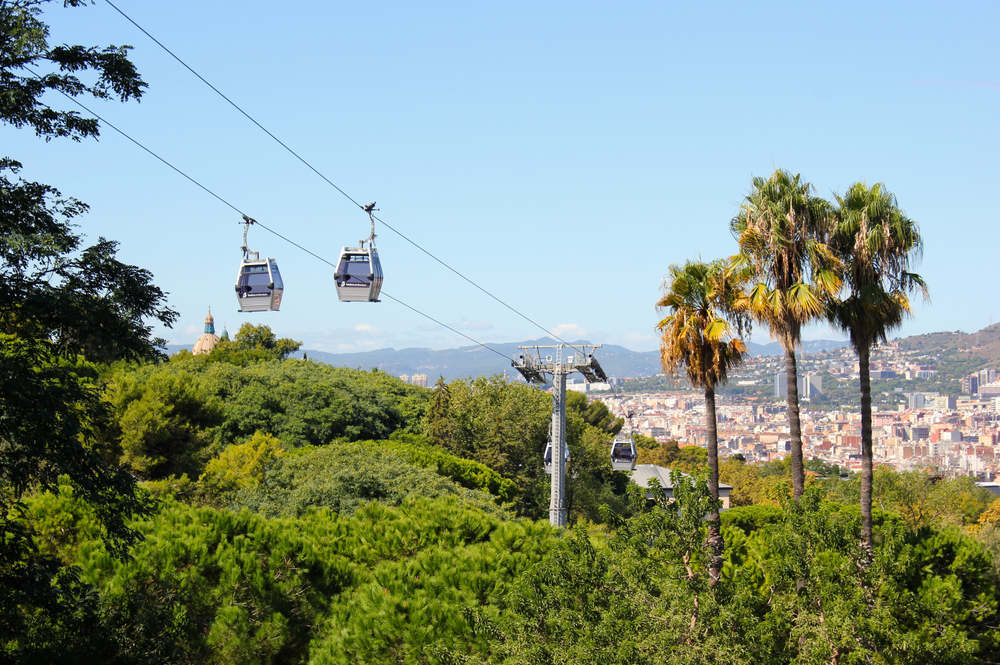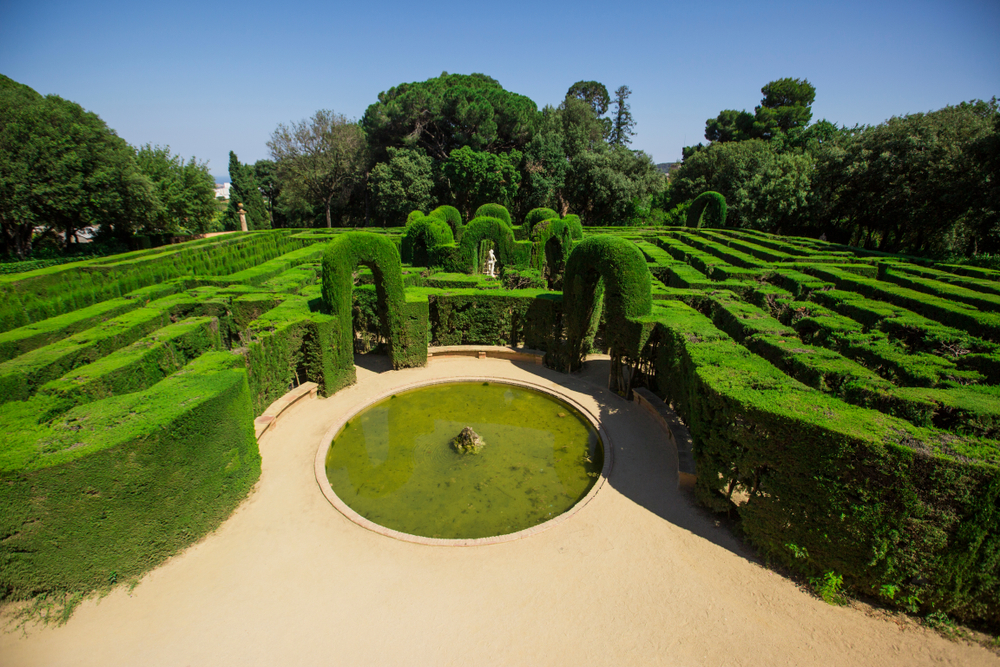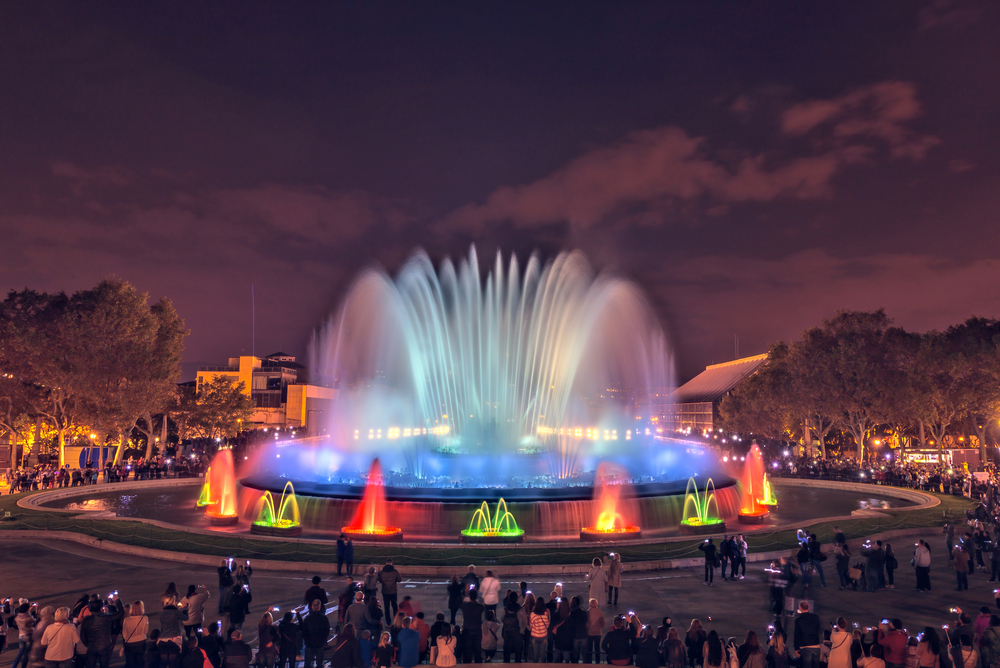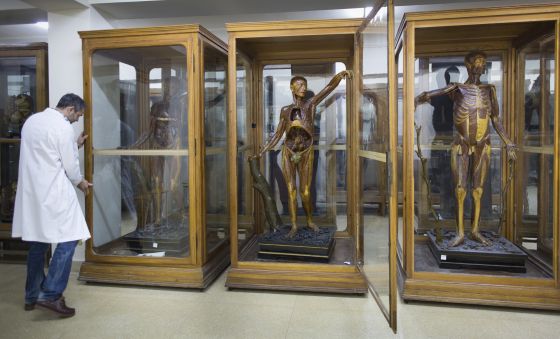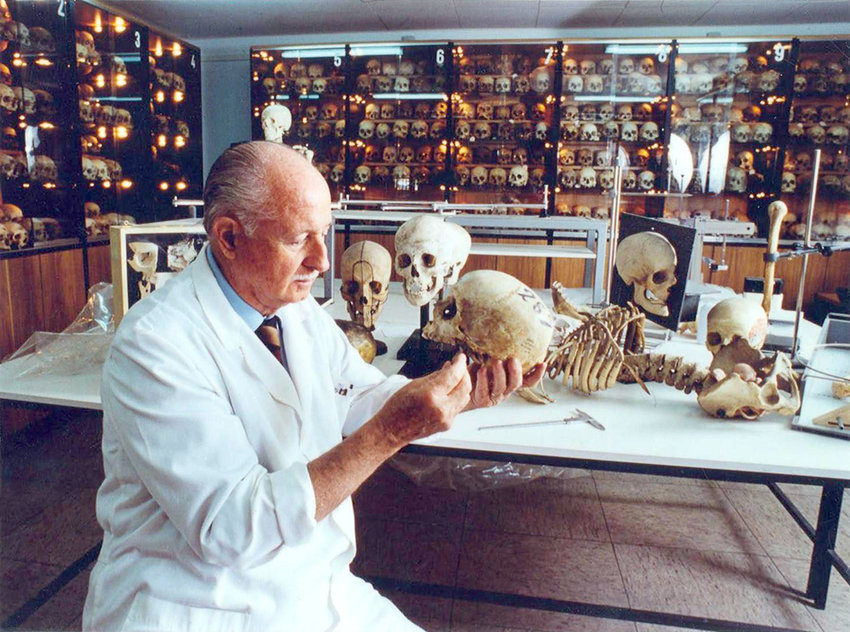Points of Interest
Barcelona Cable Car
Telefèric de Montjuïc Avinguda Miramar, 30
Barcelona, Spain
The Montjuïc cable car has been the most special way to discover the charms of Barcelona for many years. Its 750 meters (2,460 feet) of route allow you to gaze at unparalleled views, culminating your journey in the Montjüic Castle, on the top of a mountain that represents the living history of the city. Enjoy the most emblematic symbols of Barcelona as never before, such as the Sagrada Familia, Camp Nou, or Magic Fountain of Montjuïc. You will have Barcelona at your feet! On Montjuïc mountain you can enjoy museums such as the Fundació Joan Miró, Archaeology Museum, and Museu Nacional d'Art de Catalunya. See historic sites including parks and gardens as well as Olympic Ring.
—Information provided by Telefèric de Montjuïc
Calder Mercury Fountain
Parc de Montjuïc
Barcelona 08038, Spain
A unique fountain is found inside a hilltop museum known as the Fundació Joan Miró (Joan Miró Foundation). Instead of water, the Calder Mercury Fountain flows with liquid mercury as a tribute to the mercury mines in Almadén, Spain, which were once the world’s greatest source of the chemical element. Named for its creator American sculptor Alexander Calder, the fountain was on display at the 1937 World’s Fair in Paris.
Erotic Museum of Barcelona
Museo Erótico de Barcelona 96 La Rambla
Barcelona 08002, Spain
A small museum focused on the history of sex, Erotic Museum of Barcelona offers a fascinating look at sexual intercourse from ancient times to the present. Exhibits include the Kama Sutra, Japanese depictions of oversized genitalia known as shunga, some of the first pornography, paintings by Picasso, photographs, sexual devices, and world records.
Greenhouse Atocha
24B Calle de Méndez Álvaro
Madrid, Spain
Explore a lush botanical garden inside a former train station at Greenhouse Atocha. The 4,000-square-meter (43,056-square-foot) garden features more than 7,000 tropical and subtropical plants representing around 260 species. Some of the plants on display include African coffee plants, cacao plants, South African bird of paradise flowers, coconut trees, carnivorous species, water lilies, royal palms, rubber trees, and banana trees. There are several endangered plant species as well such as the ginkgo biloba plant and palm bottle trees.
Labyrinth Park of Horta
Parc del Laberint dˈHorta 1 Passeig dels Castanyers
Barcelona 08035, Spain
One of Barcelona’s oldest gardens, Labyrinth Park of Horta got its start in 1791 as part of the Desvalls family estate. A 610-meter-long (2,000-foot-long) maze made of tall, manicured hedges leads to a statue of the Greek god of love, Eros. A pond and two pavilions, also featuring statues of Greek gods, overlook the labyrinth.
Magic Fountain of Montjuic
Plaça de Carles Buïgas, 1
Barcelona, Spain
Magic Fountain of Montjuic is a spectacular water fountain with shows featuring millions of combinations of water, sounds, and lights. It is the main element of a collection of waterfalls and lakes on the Maria Cristina axis, which runs from the Palau Nacional to Plaça d'Espanya in Montjuïc. In this large spring, 2,600 liters (687 gallons) of water per second flow in three concentric lakes using a water recirculation system. The immersive fountain show is most impressive when seen in the darkness after dusk.
Museum of Anatomy
Javier Puerta Plaza de Ramón y Cajal
Madrid, Spain
Part of Complutense University’s College of Medicine, the Museum of Anatomy was created in 1787 by royal decree of King Charles III. It features wax sculptures of anatomically precise models representing the stages of pregnancy from conception to childbirth, the oldest of which dates to 1794. There also is a collection of plaster sculptures of various human body parts, and a bone collection includes thousands of skulls as well as two skeletons.
Reverte Coma Forensic Museum
Plaza de Ramón y Cajal
2 Séneca Avenue
Madrid, Spain
A small museum inside the Faculty of Medicine Building at Madrid’s Complutense University is named after Professor Reverte Coma who founded Spain’s first forensic and paleopathology laboratory in 1980. Interesting objects displayed throughout five rooms include more than 800 skulls, Egyptian mummies, weapons, specimens of poisonous plants and animals, diseased bones, torture devices, crime scene photographs, and more. The museum aims to educate people about the tools and history of forensic medicine and criminal studies.
Copyright © 1993—2024 World Trade Press. All rights reserved.

 Spain
Spain 